FOR ALL AGES
Spring officially begins (in the Northern Hemisphere) on 20 March in most years. This is a magical time for families, when the world renews itself and there’s so much to discover in the natural world.
The best advice is to simply get out there, keep your eyes and ears open, and explore. However, it always helps to have a few ideas - games, missions, scavenger hunts and the like - to keep the kids focused and entertained. Here, then, are 22 ideas for making the most of this glorious new season.
Catkin Hunt: How many different types of catkin (flower clusters) can you spot dangling from trees? Can you identify them all with the help of a guidebook or phone app?
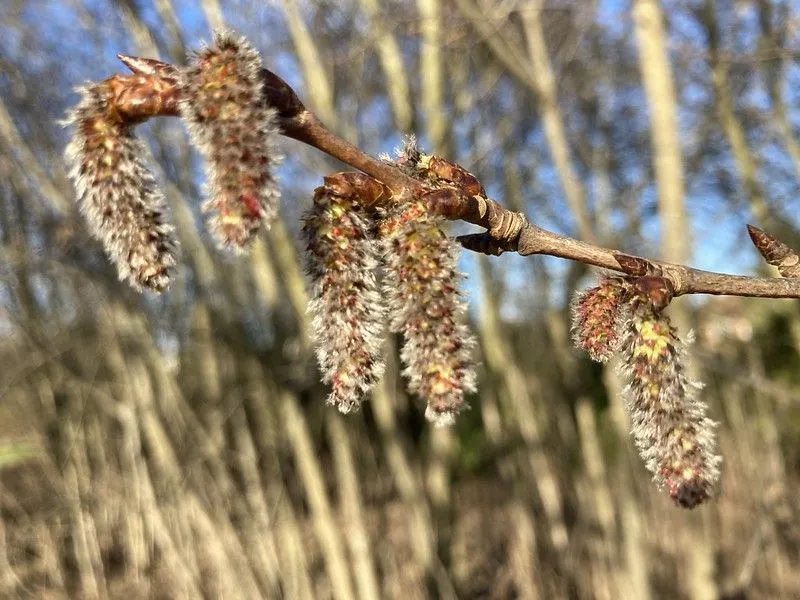
Bud Diary: Visit all the local trees in your area and note down which ones begin to bud first (draw pictures if you like). Which species do they belong to? If you record the dates, you can return each year to see if this sign of spring is later or earlier for each tree.
Bluebell Woods: Live in the UK? Then you’re in luck. It’s often said that about half the world’s bluebells grow in this country. I’ve no idea if that’s really true, but I do know that just about any decent woodland will be carpeted with this most beautiful of flowers. Even city dwellers should be in walking distance of a patch. Bluebells typically flourish from April into May, but you’ll also find the early bloomers in March.
First Butterfly: Who can spot the first butterfly of spring? The earliest make an appearance slightly before spring, sometimes even in February. But late March and April is when large numbers begin to emerge. How many species can you spot?
Rainbow Of Flowers: The crocuses, daffodils and primroses have been abloom for several weeks, but now a great variety of flowers will start to appear. Can you find a whole rainbow of colours on your daily walk? You may need to include tree catkins to get the whole spectrum (green and red are common catkin colours, but less frequent among wild flowers).
Horse Chestnut Buds: Do you remember where all your local horse chestnuts were from autumn’s conker forays? Well, it’s worth returning in spring. You won’t find any conkers, but you will discover the equally impressive way that horse-chestnuts throw out their leaves. Large sticky buds explode into a riot of young foliage in a process that looks ever-so-slightly alien (see pic).
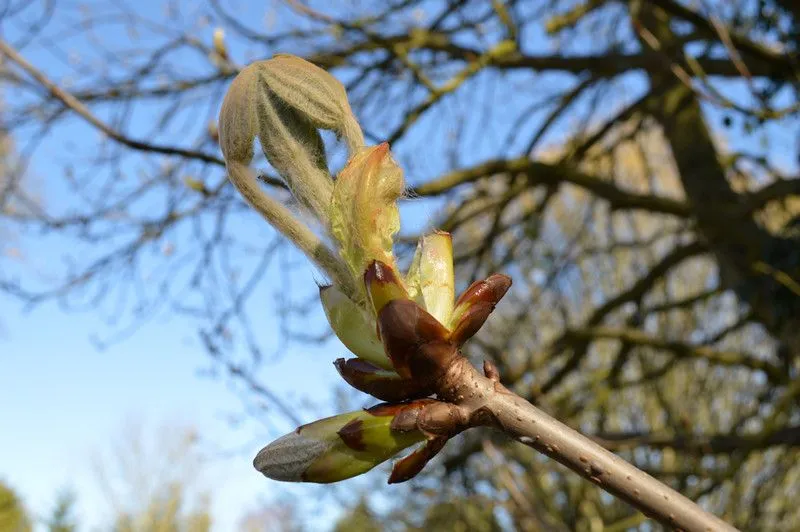
Name That Bird: Early spring is the best time of year to learn about birds. Many songbirds are whistling out their tunes in an effort to attract a mate. At the same time, most trees are still bare, making it easier to spot the songsters. Take the time to listen to bird calls, and use a cheap pair of binoculars to study the beauties making them. See if you can memorise which birds make which sounds.
Sparrow Spotting: Speaking of small birds, 20 March is World Sparrow Day, a chance to celebrate this most plucky of garden birds. I remember sparrows as the most abundant of birds during my childhood, but their numbers have since plummeted. They are still relatively common, and easy enough to spot, however. Spend a bit of time hanging out beside your nearest hedgerow, or keep an eye on your garden bird feeder, and you’ll soon see a few. Beforehand, it’s worth reading up with the kids about the different types of sparrow (house and tree sparrows, and the similar looking dunnock), and see if you can spot the difference.
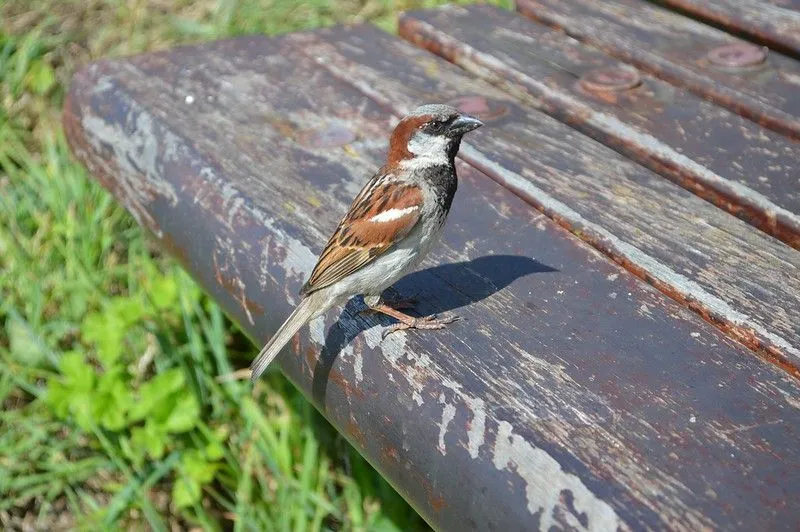
Frogspawn: Our amphibious friends get to work a little earlier than the birds. Frogspawn can be found in ponds as early as January, but there’s still plenty around into March. The frog lifecycle is a fascinating topic to discuss with children - so much so that they’ll probably already be aware of it from school or nursery. We wouldn’t recommend taking frogspawn home. It has the best chance of developing right where it is. However, if you have space, you could try digging your own garden pond in the hope of attracting your own frog population.
Blossom Safari: One of the most popular facets of spring is the cherry blossom. Our towns and cities briefly come alive in dainty hues of pink and cream. It’s not just cherries either. Fruit trees such as apple, pear and plum also put on a show. And let’s not discount the more scrubby trees of the hedgerow. Blackthorn in particular is one of the first to bloom. Its snow-like blossom is a miraculous site in dense hedgerow. See how many types of blossom you can discover on a walk around town, and record your finds (with dates) in a diary.
Duckling Delight: Head out to your nearest large pond or lake to see if this year’s first broods of ducklings have hatched. Always a popular one with the kids, you can also look out for baby swans, geese, grebes, moorhens and coots.
Have A Spring Party: If the rebirth of the natural world isn’t cause enough for a party, then I’m not sure what is. Local restrictions may mean that you’re not able to meet with friends, but you can still hold a celebration within your household. Check out our previous article on how to make spring party decorations.
Make A Bird Box: One simple but splendid way to attract more spring wildlife to your garden is to build a bird box. Small birds are on the lookout for nesting sites at this time of year, and every little helps.
And Put Out A Bird Feeder: An even simpler idea is to hang a bird feeder in your garden. You’ll grow the number of avian visitors exponentially. We’ve put together a dozen creative ideas for building your own feeder, and professionally made examples can be found in most large supermarkets. A bird bath would also be worth considering.
Build A Maypole: The tradition of dancing round a pole on 1 May goes back centuries. You can construct your own from any lengthy stick you might have at home. Even a broom can serve for smaller children. For something more intricate, check out our guide to building your own maypole.
Get Planting: Spring’s a great time to be out in the garden, digging up the weeds and failed plants of winter and dropping new seeds. We’ve put together a short guide to gardening with children that should provide further inspiration.
Revisit The Parks: We all spent a lot of time exploring our local parks during the various lockdowns. But did you give them as much attention in early spring last year? If not, it’s time to revisit and explore all those familiar corners in a new, most glorious season.
Garden Scavenger Hunt: For those lucky enough to have gardens, have a go at this spring-centric scavenger hunt. Can you spot all nine in less than 30 minutes?
Other Garden Games: All families have their own favourite outdoor games, whether a simple bit of throw-and-catch or a full-on game of rounders. But how about these creative suggestions, which include setting up a garden obstacle course, lawn Twister and water cup races. All perfect for the better change of weather that spring brings.
Have A Chortle: What's the difference between a spring roll and a summer roll? The seasoning. If you thought that joke was bad, take a look at these 58 spring-themed jokes to make you groan even more.
Spring Quotes: Want some finer words than these about the start of spring? Then try this epic compilation of quotes about the month of March. All 65 of them!
Take The Big Spring Quiz: It starts easily enough -- name the four seasons -- but these 100 questions about this joyous season get progressively trickier. Can you name Thailand’s spring festival, or the country that holds the world record for largest Easter Egg?
Read The Disclaimer
At Kidadl we pride ourselves on offering families original ideas to make the most of time spent together at home or out and about, wherever you are in the world. We strive to recommend the very best things that are suggested by our community and are things we would do ourselves - our aim is to be the trusted friend to parents.
We try our very best, but cannot guarantee perfection. We will always aim to give you accurate information at the date of publication - however, information does change, so it’s important you do your own research, double-check and make the decision that is right for your family.
Kidadl provides inspiration to entertain and educate your children. We recognise that not all activities and ideas are appropriate and suitable for all children and families or in all circumstances. Our recommended activities are based on age but these are a guide. We recommend that these ideas are used as inspiration, that ideas are undertaken with appropriate adult supervision, and that each adult uses their own discretion and knowledge of their children to consider the safety and suitability.
Kidadl cannot accept liability for the execution of these ideas, and parental supervision is advised at all times, as safety is paramount. Anyone using the information provided by Kidadl does so at their own risk and we can not accept liability if things go wrong.
Kidadl is independent and to make our service free to you the reader we are supported by advertising.
We hope you love our recommendations for products and services! What we suggest is selected independently by the Kidadl team. If you purchase using the buy now button we may earn a small commission. This does not influence our choices. Please note: prices are correct and items are available at the time the article was published.
Kidadl has a number of affiliate partners that we work with including Amazon. Please note that Kidadl is a participant in the Amazon Services LLC Associates Program, an affiliate advertising program designed to provide a means for sites to earn advertising fees by advertising and linking to amazon.
We also link to other websites, but are not responsible for their content.
Was this article helpful?

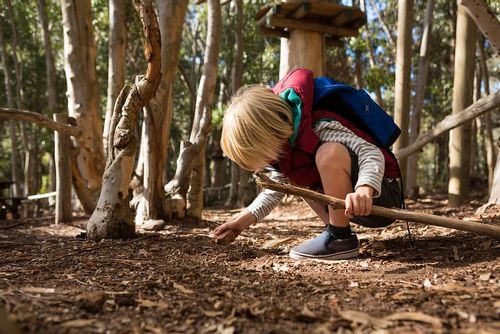
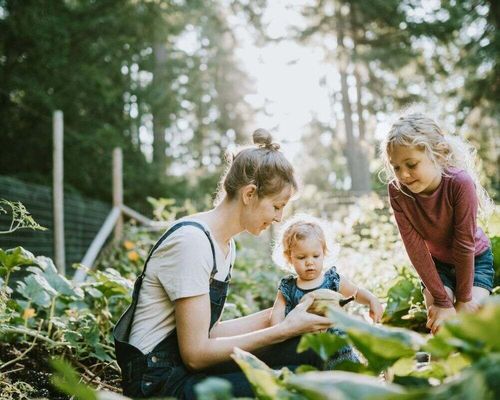
Browse Category



We’ll send you tons of inspiration to help you find a hidden gem in your local area or plan a big day out.



Check your inbox for your latest news from us. You have subscribed to:
Remember that you can always manage your preferences or unsubscribe through the link at the foot of each newsletter.